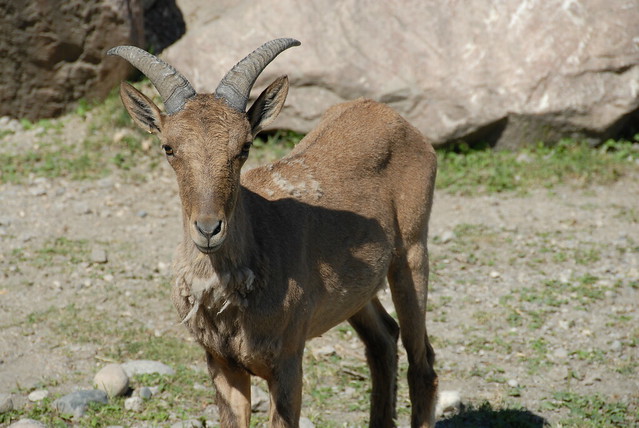Capra cylindricornis Cladus: Eukaryota Name Capra cylindricornis (Blyth, 1841) References IUCN link: Capra cylindricornis (Blyth, 1841) (Vulnerable) Vernacular names ------- The East Caucasian tur (Capra cylindricornis) is a mountain dwelling goat antelope found only in the eastern half of the Caucasus Mountains. East Caucasian turs stand up to 1 metre (39 in) tall at the shoulder and weigh around 60 kilograms (130 lb). They have large but narrow bodies and short legs. They generally have a dark chestnut coat in winter and a lighter chestnut coat in summer. Males have slightly lyre shaped horns which reach around 90 centimetres (35 in) in length while in females they are much smaller (30 centimetres / 12 inches maximum). East Caucasian turs live in rough mountainous terrain between 800 and 4,000 metres (2,600 and 13,000 ft) above sea level where they eat mainly grasses and leaves and are preyed upon by wolves and lynxes. Females live in herds of around ten individuals, while males are solitary.
Breeding occurs from late November to early January, with births taking place in May and June. Giving them a gestation period of only around 150 days (about six months). Young turs are extremely agile, being able to scamper about steep slopes after only a day of life. They generally start sampling grasses after on months, but continue to suckle for 2-4 months. Feeding and migration During the warm months, feeding occurs at intervals throughout the late afternoon, night, and morning, with the hottest hours of the day being spent resting in sheltered places. In winter, herds may remain in open pastures throughout the day, alternately grazing and resting. Daily movements may cover 15 to 20 kilometres (9.3 to 12 mi). There is a seasonal migration covering a vertical distance of 1,500 to 2,000 metres (4,900 to 6,600 ft), with an upward thrust in May and a retreat downwards in October. The solitary adult males generally inhabit higher altitudes than groups of females and their young, descending to join them in the breeding season. During this time, vigorous competitions arise as they vie for mating rights. In protected areas, the density of animals varies between 5/km² and 16/km². References 1. ^ Weinberg, P. (2008). Capra cylindricornis. In: IUCN 2008. IUCN Red List of Threatened Species. Downloaded on 1 April 2009. Database entry includes a brief justification of why this species is of near threatened. * Brent Huffman, 2004, www.ultimateungulate.com Source: Wikipedia, Wikispecies: All text is available under the terms of the GNU Free Documentation License |
|


